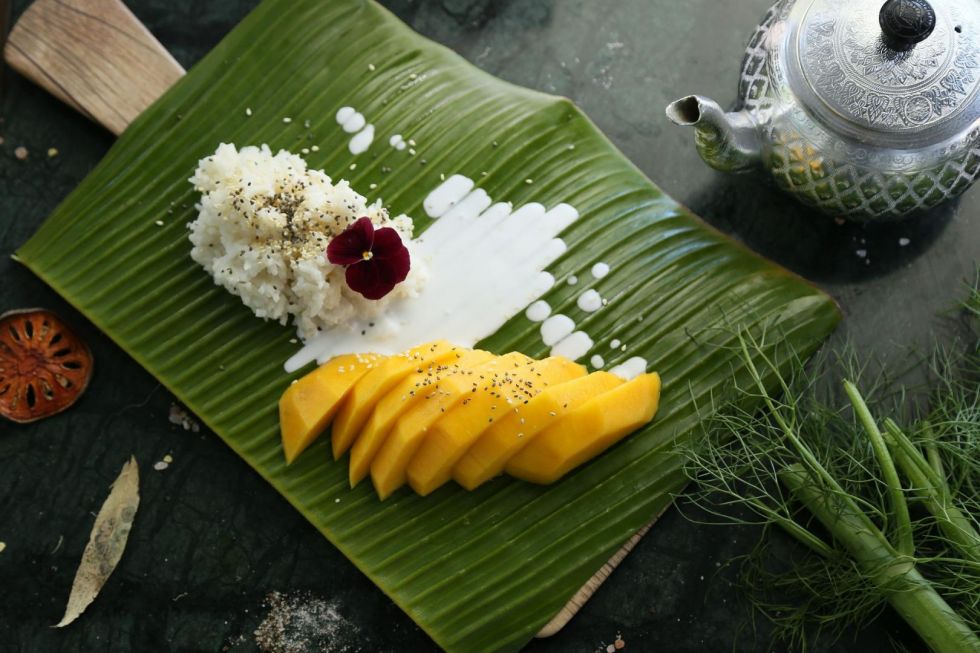Like all Asian food, but love Thai? Then it’s time for you to venture down the tasty path of Thai desserts. With tart exotic fruits, all the coconut milk your heart desires, and tons of sticky rice to go around–we can’t get enough of Thai sweets.
From soupy tapioca pudding with sweet coconut milk to fried bananas with vanilla bean ice cream, Thai desserts are in a league of their own. That said, it’s easy to spot what makes them oh, so special.
From textures and tastes to commonly used ingredients, the following will give you the groundwork for making these sweet and savory Thai treats.
Contrasting Textures & Flavors
Think of Thai desserts like an onion–it’s all about the layers. Like traditional curries and savory salads, most Thai delicacies have this in common. So when it comes to desserts, it’s no surprise that even the simplest of sweets have a lovely combination of contrasting flavors and textures.
Take the delicious Thai classic Black Beans Sago, for example. Also known as Sa Koo Tua Dum, this sweet dessert has a liquid base of sweet and velvety coconut milk, which is cooked down with starchy red adzuki beans and gummy-like tapioca pearls.
Another instance where contrasting flavors and textures meet to create a mouthwatering dish is the street food standard Khanom
Stock Up on These Two Ingredients
Two words, coconut milk. If you love Thai food, chances are you’ve already stocked up on your fair share of coconut milk. Well, you might need more when we tell you that this ingredient is essential to almost all Thai desserts. It can be found as a hot topping, which is mixed with brown sugar and then poured atop of fresh fruit and sticky rice or made into a jellied custard with rosewater and tart fruits.
The next ingredient you’ll need is something Gluten Free eaters might already have on hand. While whole jasmine rice is popularly found in a wide array of Southeast Asian cooking such as rice pudding with cooked rice, in Thai desserts it’s most commonly seen in the form of rice flour.
Used to form a dough for sticky rice flour balls, as seen in the traditional Boua Loy, rice flour is made to use in plenty of Thai delicacies. Another place you’ll find rice flour is in the form of a thick batter in fried desserts, like these Thai Fried Bananas, also known as Goreng Pisang.
Get Your Exotic Fruit, On
Fresh fruit makes it tasty. Exotic fresh fruit makes it Thai. A country known for its abundance of fresh ingredients, it’s no wonder you’ll find tons of fruit varieties in authentic Thai desserts. Almost all the standard sweets will show up with some form of exotic fruit, whether in gelatinous
How exotic are we talking? Some reoccurring players include lychee, mangosteen, and durian – you name the exotic fruit and chances are we have a delicious Thai delicacy to support it. Moreover, most of these fruits don’t take too long to prepare and are easier than first meets the eye.
A fresh Banana-Lychee Dessert in Coconut Milk is much simpler than you’d expect, while a classic Fresh Mango with Sticky Rice is super quick, especially if you’re making a curry and already have extra jasmine rice to spare.
Get the Right Rice
Choosing the right rice is key to most Southeast Asian dishes. Whether it’s a curry or making your own rice flour, the type of grain you use makes a huge difference. Whether you decide to go for a simple or more complex dessert, chances are you’ll come across a rice dilemma – and we just can’t let that happen.
Because of its aromatic quality and slightly sticky texture when cooked, we recommend our Carolina® Jasmine Rice for your sticky rice creations. This variety cooks right up to the perfect consistency for sticky rice, every time. You can also try using white rice as well, for more information on cooking white rice you can check our website.
Dare to whip up some sticky rice balls? Try your hand at making rice flour by using any of our long- to medium-grain rice varieties.

